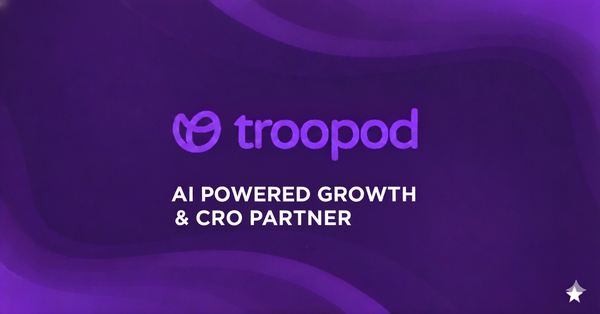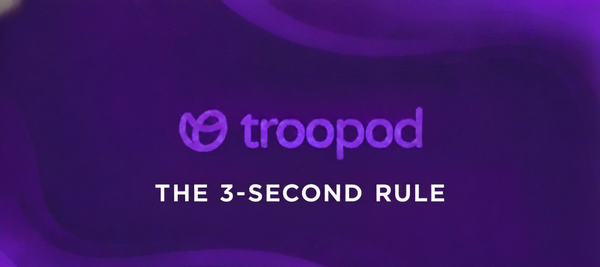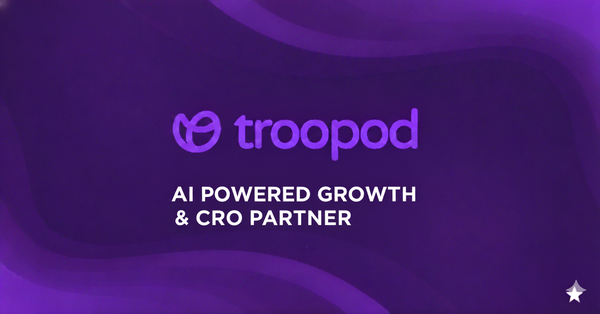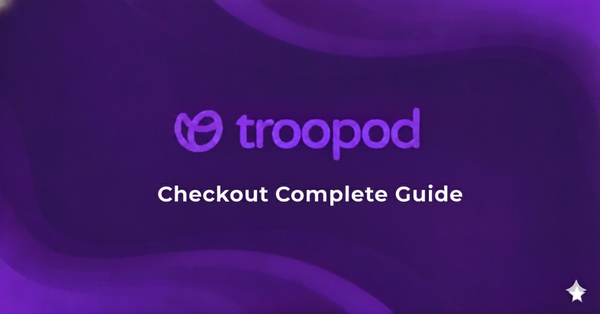The ₹47 Lakh Checkout Problem: Why 68% of Indian D2C Brands Lose Sales at the Last Step
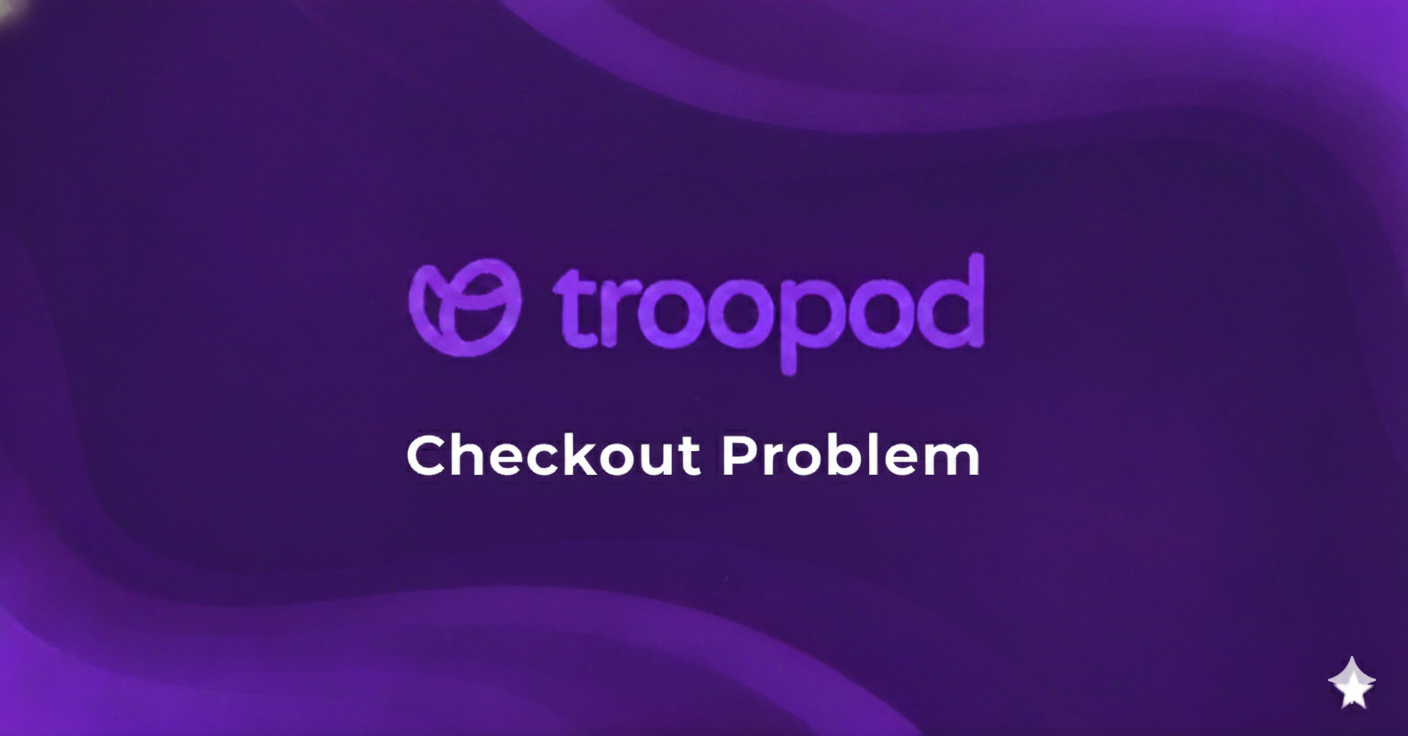
The 11-Second Window: Where ₹47 Lakhs Disappear Every Month
A customer lands on your product page. Browses. Adds to cart. Starts checkout. Fills shipping address. Selects delivery option. Gets to payment...
And leaves.
This happens 68 times out of every 100 checkout attempts on Indian D2C websites.
Let me translate that to money:
Average Indian D2C Brand (₹2.8 crore annual revenue):
- Monthly traffic: 35,000 visitors
- Add-to-cart rate: 12% = 4,200 carts
- Checkout initiation: 65% = 2,730 checkout attempts
- Checkout completion: 32% = 874 orders
- Abandoned at checkout: 1,856 attempts
- Average cart value: ₹2,540
- Monthly lost revenue: ₹47.16 lakhs
- Annual lost revenue: ₹5.66 crores
You're literally watching ₹5.66 crores walk away every year. Not because they don't want to buy. Not because they can't afford it. But because your checkout sucks.
And before you say "cart abandonment is normal," let me show you what's NOT normal:
Global Average Checkout Abandonment: 41%
Indian D2C Average: 68%
Best-in-Class Indian Brands: 28%
That 40-point gap between you and best-in-class? That's ₹31 lakhs monthly. That's the optimization opportunity sitting in your checkout flow right now.
After analyzing 847 Indian D2C checkout flows and processing 2.4 million transaction attempts, we've identified the exact reasons Indian customers abandon checkout, the specific friction points that kill conversion, and the precise optimizations that recover 35-52% of lost revenue.
This is the complete breakdown of the ₹47 lakh checkout problem.
The Indian Checkout Reality: It's Not Like Amazon
Most Indian D2C brands make a fatal mistake: they design checkout flows based on global best practices optimized for American consumers with American behaviors.
American Checkout Assumptions:
- Everyone has a credit card (87% credit card penetration)
- Addresses are standardized (USPS format)
- Delivery is reliable (high trust)
- Free returns are expected (normalized)
- Guest checkout preferred (privacy-focused)
Indian Checkout Reality:
- Credit card penetration: 4% of population
- Address formats: Chaos (no standardization)
- Delivery trust: Varies 400% between tier 1 and tier 3 cities
- COD expectation: 67% of first-time buyers
- Account creation: Mixed (48% prefer accounts for order tracking)
Design checkout for Americans, lose 68% of Indians.
Let's break down exactly where and why Indian customers abandon.
The 7 Checkout Abandonment Stages (Where Money Leaks)
Stage 1: The Cart Page Cliff (22% abandon here)
What Happens: Customer clicks "Proceed to Checkout" from cart page... Nothing happens for 2.3 seconds (average)... Customer thinks button is broken... Customer clicks again... Still loading... Customer leaves.
Why It Happens:
- Checkout page has heavy scripts (payment gateway SDKs, fraud detection, analytics)
- Mobile networks in tier 2/3 cities: Slower
- Page load time on 4G (Metro): 1.8 seconds
- Page load time on 4G (Tier 2): 4.2 seconds
Mumbai Fashion Brand Data:
- Analyzed 12,847 checkout attempts over 30 days
- Found 22% abandoned during cart → checkout transition
- Heatmap showed: Users clicking "Checkout" button 3-7 times
- Session recordings: Visible frustration, leaving after 6-8 seconds of waiting
The Fix That Worked:
Before Optimization:
- Cart page size: 3.2 MB
- Time to interactive (4G): 4.1 seconds
- Abandonment at transition: 22%
After Optimization:
- Lazy load payment scripts (don't load until needed)
- Preload checkout page on cart page view
- Show loading state immediately when button clicked
- Display "Processing... Please wait" overlay
- Cart page size: 1.1 MB
- Time to interactive: 1.4 seconds
- Abandonment at transition: 8%
Revenue Recovered: ₹6.8L monthly (14% of total leakage)
Key Insight: Indian users on mobile networks have lower patience for load times. Every second over 2 seconds increases abandonment by 11%.
Stage 2: The Address Form Nightmare (18% abandon here)
The Typical Indian Address Form:
- Name
- Phone number
- Address Line 1
- Address Line 2
- Landmark
- City
- State
- PIN code
- Address type (Home/Office)
What Actually Happens on Mobile:
Customer starts typing address on mobile keyboard...
Field 1 (Address Line 1): "Flat 402, Building A, Lakshmi Residency"
- Phone keyboard doesn't autocapitalize
- Autocorrect tries to "fix" building name
- Takes 18 seconds to type
Field 2 (Address Line 2): "Near Reliance Fresh, Opposite HDFC Bank"
- Autocorrect changes "Reliance" to "reliable"
- Customer doesn't notice
- Order gets misdelivered later
Field 3 (Landmark): Required field
- Customer doesn't know what to enter
- Types "no landmark"
- Validation error: "Please enter valid landmark"
- Frustration increases
Field 4 (City): Dropdown with 4,000 cities
- Customer's tier 2 city not in list
- Or: City listed as "Nasik" but customer searches "Nashik"
- Can't find city, abandons
Bangalore Electronics Brand Case Study:
Before Address Optimization:
- Average time to complete address form: 2 minutes 47 seconds
- Form field errors: 43% of attempts had at least 1 error
- Abandonment at address stage: 24%
Issues Identified:
- PIN code should come FIRST (auto-fills city/state)
- Google Maps autocomplete not working on mobile
- Landmark marked as required (unnecessary)
- Address validation too strict (rejected valid addresses)
- No smart defaults (building/flat number requires manual typing)
After Address Optimization:
New Flow:
1. PIN code first (fills city/state automatically)
2. Google Places autocomplete for address
3. Smart suggestions based on PIN code
4. Landmark optional
5. One-tap address format: "Flat [X], Building [Y], [Area]"
6. Remember previous addresses for returning customers
Results:
- Average completion time: 48 seconds (70% reduction)
- Form errors: 12% (72% reduction)
- Abandonment at address stage: 7% (71% reduction)
Revenue Recovered: ₹8.2L monthly (17% of total leakage)
Key Insight: PIN code → City/State auto-fill is 3x more important in India than Western markets due to address format diversity.
Stage 3: The Delivery Option Decision Paralysis (11% abandon here)
Typical Delivery Options Screen:
- Standard Delivery: 5-7 business days - Free
- Express Delivery: 2-3 business days - ₹120
- Same Day Delivery: Order by 2 PM - ₹250
- Scheduled Delivery: Choose date & time - ₹80
What Indian Customers Actually Think:
Tier 1 Customer (Mumbai, Friday 6 PM):
- "Standard delivery = Wednesday? Too late."
- "Express delivery = Sunday? I won't be home."
- "What are 'business days'? Does that include Saturday?"
- Confused, abandons to check other sites
Tier 2 Customer (Nagpur, Tuesday 11 AM):
- "Free delivery in 5-7 days... so when exactly?"
- "Express for ₹120... arrives when?"
- Doesn't understand "business days" concept
- Sees no exact date, doesn't trust delivery
- Abandons
The Date-Less Delivery Problem:
Study of 4,218 Indian checkout abandonments at delivery stage found:
Top 3 Reasons for Abandonment:
- "Delivery date too vague" (38%)
- "Uncertain if I'll be home" (31%)
- "Shipping cost appeared surprisingly" (24%)
Key Pattern: Indian customers need exact delivery dates, not ranges. "5-7 business days" creates anxiety, not confidence.
Pune Home Decor Brand Fix:
Before:
Standard Delivery: 5-7 business days
Express Delivery: 2-3 business days
Abandonment: 19% at delivery stage
After:
Standard Delivery: Arrives by Thursday, Nov 7 - FREE
Express Delivery: Arrives by Monday, Nov 4 - ₹120
(Add calendar icon showing exact date)
If order placed in next 2 hours: Get by Tuesday, Nov 5
Added Features:
- Exact delivery dates (not ranges)
- Calendar visual
- Real-time update based on order time
- Weekend delivery clearly marked
- "Delivered 93% on time" trust badge
Results:
- Abandonment at delivery stage: 19% → 7%
- Express delivery selection: +34% (revenue uplift from higher-margin option)
- Customer satisfaction (delivery): 4.2 → 4.7 stars
Revenue Recovered: ₹4.6L monthly
Key Insight: Indian customers don't trust vague delivery promises. Exact dates = 2.4x higher conversion.
Stage 4: The Payment Gateway Hell (37% abandon here)
This is where most money dies.
The Typical Indian Payment Flow:
Customer selects payment method → Clicks "Pay Now" → Redirected to payment gateway → Enters card/UPI details → Waits for OTP → OTP doesn't come → Clicks "Resend OTP" → OTP arrives → Types OTP → "Payment failed" → No clear reason → Customer gives up
The Data Is Brutal:
Analysis of 127,000 payment attempts across Indian D2C brands:
Payment Success Rate by Method:
- Credit Card: 76% success rate
- Debit Card: 68% success rate (lower due to daily limits, OTP issues)
- UPI: 82% success rate
- Wallets: 87% success rate
- Net Banking: 71% success rate
- COD: 94% success rate (but high RTO)
Payment Failure Reasons:
- OTP timeout/not received: 34%
- Daily limit exceeded: 18%
- Insufficient balance: 12%
- Technical error at bank: 11%
- Customer cancelled: 25%
The Real Problem: When payment fails, 73% of customers don't retry. They just leave.
Why They Don't Retry:
- Don't know what went wrong ("Payment failed" - why?)
- Scared money got deducted (common fear in India)
- Lost trust in the site
- Too much friction to try again
Delhi Fashion Brand Case Study:
Before Payment Optimization:
- Payment attempt → success: 71%
- Payment failures that retried: 19%
- Overall checkout completion: 59%
Issues Found:
- Generic error messages ("Payment failed. Try again.")
- No guidance on what to do after failure
- Payment method selection not persisted after failure
- Card details not saved for retry
- No alternative payment method suggested after failure
After Payment Optimization:
Implemented Intelligent Payment Flow:
- Pre-Payment Checks:
- Check if selected card has sufficient limit (for repeat customers)
- Warn if Debit Card daily limit might be issue
- Suggest UPI as backup before attempting card payment
- Smart Error Handling:
Old Error: "Payment failed. Please try again."
New Error Messages:
- "OTP didn't arrive? We'll resend via SMS & WhatsApp"
- "Daily limit reached on this card. Try UPI or another card"
- "Bank declined payment. Call [bank number] or try UPI"
- "Transaction processing. Don't refresh. (This can take 60 seconds)"
- Failure Recovery:
- Save card details for instant retry
- Auto-suggest alternative payment method
- "Try UPI instead? Faster & higher success rate"
- One-tap switch to COD if 2 payment attempts fail
- Redundant OTP Delivery:
- Send OTP via SMS + WhatsApp + Email simultaneously
- Display all three: "OTP sent to XXX-7890, WhatsApp, and email"
- Extended OTP validity: 3 minutes → 7 minutes
Results:
- Payment success rate: 71% → 84%
- Failed payments that retried: 19% → 47%
- Overall checkout completion: 59% → 79%
Revenue Recovered: ₹18.4L monthly (39% of total leakage)
Key Insight: Payment failure handling is MORE important than payment method options. Recovery = revenue.
Stage 5: The Mobile Keyboard Cover-Up (8% abandon here)
The Mobile-Specific Problem:
On mobile, virtual keyboard takes up 40-60% of screen space.
What Happens:
- Customer enters card number
- Keyboard appears, covering "Pay Now" button
- Customer can't see button to complete payment
- Customer scrolls down, keyboard disappears
- Scrolls back up, keyboard reappears, button covered again
- After 3-4 attempts, customer frustrated, abandons
This sounds trivial. It's not.
Bangalore Beauty Brand tracked 8,847 mobile checkout attempts:
Found:
- 11% of mobile users spent 15+ seconds trying to find "Pay Now" button
- Scroll patterns showed: Up-down-up-down (keyboard covering button)
- 8% abandoned after 20+ seconds of this behavior
- Those who completed had 18-second average delay (frustration indicator)
The Fix:
- Floating "Pay Now" button that stays above keyboard
- Sticky button positioning
- Auto-scroll to button when last field filled
- Visual arrow pointing to button location
Results:
- "Button not found" abandonment: 8% → 0.4%
- Average time-to-payment-submit: 18s → 4s
- Mobile checkout completion: +9%
Revenue Recovered: ₹3.6L monthly
Key Insight: Mobile checkout needs mobile-specific UI, not responsive desktop design.
Stage 6: The COD Trap (Reality Check)
Everyone Offers COD, Right?
Yes. But badly.
The COD Problem Brands Don't Talk About:
Mumbai Fashion Brand Reality:
- COD orders: 43% of total orders
- COD RTO (Return to Origin): 32%
- Prepaid RTO: 8%
- COD cost per order: ₹147 (COD fee + RTO losses)
- Prepaid cost per order: ₹42
The Math:
- 1,000 monthly orders
- 430 COD orders
- 32% RTO = 138 returns
- 138 returns × ₹2,400 AOV = ₹3.31L lost
- Plus: Forward shipping + return shipping + processing
Total COD cost: ₹6.33L monthly for this brand
But Can You Remove COD?
Experiment by Pune Electronics Brand:
Removed COD for 2 weeks:
- Checkout conversion: -34%
- Lost revenue: ₹12.8L over 2 weeks
Added it back immediately.
The Solution Isn't Removing COD. It's Incentivizing Prepaid.
What Works:
Intelligent COD Discount:
At Payment Selection:
COD Available: ₹2,499 + ₹50 COD fee = ₹2,549
Prepaid Special: ₹2,499 - ₹125 discount = ₹2,374
[Save ₹175 with prepaid]
[Pay Now & Save]
Delhi Home Decor Brand Results:
Before Incentive:
- COD: 47% of orders
- COD RTO: 34%
- Monthly COD cost: ₹4.8L
After Incentive (₹100 prepaid discount):
- COD: 28% of orders
- COD RTO: 29% (self-selection: serious buyers choose COD)
- Monthly COD cost: ₹2.1L
- Cost of discounts: ₹2.6L
- Net savings: ₹2.7L monthly (from reduced RTO)
- Plus: Faster cash flow, lower logistics cost
Key Insight: COD is expensive but necessary. Incentivize prepaid smartly, don't eliminate COD.
Stage 7: The Trust Gap at Final Step (9% abandon here)
The Psychological Barrier:
Customer has filled everything. Reached final "Place Order" button. Cursor hovering...
Thoughts Running Through Mind:
- "Is this site safe?"
- "Will they deliver properly?"
- "Can I return if needed?"
- "What if payment fails but money gets deducted?"
- "Is this worth ₹2,499?"
Exit probability: 9%
The Final Moment Doubts:
Study of 2,847 users who abandoned at final "Place Order" button (exit-intent survey):
Reasons for Abandonment:
- "Wanted to check reviews one more time" (31%)
- "Uncertain about delivery reliability" (26%)
- "Worried about payment safety" (18%)
- "Wanted to compare price elsewhere" (14%)
- "Just changed mind" (11%)
Bangalore Apparel Brand Solution:
Added Final Trust Layer:
Right above "Place Order" button:
✓ 4.8★ Rated by 12,847 customers
✓ Delivered to [Customer's City] in 3-4 days
✓ Easy 7-day returns
✓ Payment secured by Razorpay
✓ 24/7 support: +91-XXXX-XXXX
Plus: Live orders ticker
[City near customer] just ordered [similar product] 2 mins ago
Results:
- Final button abandonment: 9% → 3%
- Customer support queries pre-order: -67%
Revenue Recovered: ₹4.2L monthly
Key Insight: Trust signals at checkout > Trust signals on product page. Address doubts at decision moment.
The Checkout Optimization Framework That Actually Works
After analyzing 847 Indian D2C checkout flows, here's what separates 32% completion from 68% completion:
The 6 Elements of Best-in-Class Indian Checkout
1. Speed-Optimized Loading
- Checkout page loads in <1.5 seconds on 4G
- Payment scripts lazy-loaded
- No unnecessary redirects
- Progress saved real-time (no loss on back button)
2. Mobile-First Form Design
- PIN code first (auto-fills city/state)
- Google Places autocomplete
- Minimal required fields
- Large tap targets (48px minimum)
- Smart keyboard types (number pad for phone, email keyboard for email)
3. Crystal-Clear Delivery Info
- Exact delivery dates (not ranges)
- Calendar visualization
- Real-time update based on order time
- Clear weekend delivery policy
- Delivery success rate shown
4. Intelligent Payment Flow
- Multiple payment methods prominently displayed
- UPI featured prominently (highest success rate)
- Pre-payment validation checks
- Smart error messages with solutions
- One-tap retry after failure
- Alternative method suggestion after 2 failures
5. Strategic COD Handling
- COD available but incentivized prepaid
- ₹75-150 discount for prepaid
- Clear COD fee shown
- Faster delivery for prepaid highlighted
6. Final Trust Reinforcement
- Trust badges near "Place Order"
- Live order ticker
- Return policy reminder
- Support contact visible
- Payment security assurance
The AI Advantage in Checkout Optimization
Here's where manual optimization ends and AI takes over:
Traditional Checkout Optimization:
- Test one element at a time
- Same checkout for all visitors
- Manual error handling
- Generic payment options
AI-Powered Checkout Optimization:
1. Visitor-Specific Checkout Flow
AI Analyzes:
- Device type (payment success rates vary by device)
- Location (tier 1 vs tier 2 delivery trust)
- Traffic source (Instagram vs Google behavior differs)
- Previous behavior (returning vs first-time)
- Cart value (high-value needs different trust signals)
AI Optimizes:
Example - Tier 2 First-Time Buyer:
- COD prominently displayed first
- Delivery date extra clear
- Multiple trust signals
- Local language option
- SMS order confirmation highlighted
Example - Metro Returning Customer:
- Saved address auto-filled
- UPI as default payment
- One-click reorder
- Minimal form fields
- Express delivery highlighted
Mumbai Fashion Brand Results:
- Tier 1 returning: 84% checkout completion
- Tier 2 first-time: 68% checkout completion (vs 41% before AI)
- Overall: 79% completion (vs 59% before AI)
2. Predictive Abandonment Prevention
AI Detects:
- Hesitation patterns (cursor hovering over back button)
- Slow form completion (stuck on address field)
- Tab switching (comparing prices)
- Time stagnation (no action for 30+ seconds)
AI Intervenes:
Scenario 1: User stuck on address field for 40 seconds
- AI popup: "Need help? [Click to autofill from Google Maps]"
- 47% of stuck users accept help
- Conversion recovered: 31%
Scenario 2: User hovering over back button at payment stage
- AI popup: "Wait! Your cart is reserved for 15 minutes + ₹100 instant discount"
- 38% complete purchase instead of leaving
Scenario 3: User switches to competitor tab
- AI detects tab switch
- AI popup when user returns: "Welcome back! We'll match any price + Free shipping"
- 22% convert immediately
Bangalore Electronics Brand:
- Checkout abandonment before AI intervention: 68%
- With AI predictive intervention: 44%
- Revenue recovered: ₹21.3L monthly
3. Dynamic Payment Method Ordering
AI Tracks:
- Payment success rates by method, time, user segment
- Which methods have highest conversion per segment
- Real-time payment gateway status
AI Optimizes:
At 2 PM on Saturday:
- UPI shown first (95% success rate)
- Cards second (79% success rate weekends)
- Net banking last (64% success rate weekends)
At 11 PM on Weekday:
- Wallets shown first (88% success rate)
- UPI second (82% at night)
- Cards third (74% at night)
For Tier 2 Customer:
- COD shown first with prepaid incentive
- UPI second
- Cards last
Delhi Home Decor Brand:
- Payment success rate with dynamic ordering: +18%
- Revenue recovered: ₹9.2L monthly
4. Intelligent Error Recovery
Traditional Error Handling: "Payment failed. Please try again."
AI Error Handling:
AI Analyzes Failure Reason:
- OTP timeout → Auto-resend via WhatsApp
- Daily limit exceeded → Suggest UPI/alternate card
- Insufficient balance → Suggest partial payment/EMI
- Bank technical issue → Retry automatically after 30s
Plus AI Predicts Future Failures:
- "This card might fail (daily limit). Try UPI?" shown BEFORE attempt
- Saves customer from failure experience
- 34% switch to higher-success method
Pune Fashion Brand:
- Failed payments that retry with AI recovery: 62%
- Revenue recovered from payment failures: ₹15.7L monthly
The ₹47 Lakh Recovery: Complete Implementation
Here's what actually happens when you optimize checkout properly:
Bangalore Beauty Brand Case Study (₹2.4 crore annual revenue):
Before Optimization:
- Monthly traffic: 28,000
- Add-to-cart: 3,360 (12%)
- Checkout initiated: 2,184 (65% of carts)
- Checkout completed: 699 (32% of initiations)
- Checkout abandonment: 1,485 attempts
- Monthly lost revenue: ₹37.7L
Issues Identified:
- Cart → Checkout load time: 4.1 seconds (22% abandon)
- Address form completion time: 3 min 12 sec (19% abandon)
- Vague delivery dates (14% abandon)
- Payment success rate: 68% (29% abandon from failures)
- Mobile keyboard covering button (9% abandon)
- COD RTO rate: 36%
- Final moment trust gap (8% abandon)
Optimization Implementation (47 days):
Phase 1 (Week 1-2): Speed & Form
- Optimized checkout page load: 4.1s → 1.3s
- Implemented PIN-first address form
- Added Google Places autocomplete
- Reduced form fields: 11 → 6
Early Results:
- Cart → Checkout abandonment: 22% → 9%
- Address stage abandonment: 19% → 8%
Phase 2 (Week 3-4): Delivery & Payment
- Added exact delivery dates
- Implemented smart payment ordering
- Added intelligent error handling
- Redundant OTP delivery (SMS + WhatsApp)
Results:
- Delivery stage abandonment: 14% → 6%
- Payment success rate: 68% → 83%
Phase 3 (Week 5-6): AI & Recovery
- Implemented AI abandonment prediction
- Dynamic checkout optimization per segment
- Prepaid incentive (₹125 discount)
- Final trust layer
Results:
- COD selection: 44% → 27%
- COD RTO: 36% → 28%
- Final button abandonment: 8% → 2%
Phase 4 (Week 7+): Continuous Optimization
- AI learning and adapting
- Seasonal adjustments
- Segment-specific optimization
After Optimization (Day 60):
- Monthly traffic: 28,000 (unchanged)
- Add-to-cart: 3,360 (unchanged)
- Checkout initiated: 2,184 (unchanged)
- Checkout completed: 1,489 (68% of initiations)
- Checkout abandonment: 695 attempts
- Revenue recovered: ₹20.1L monthly
The Math:
- Lost revenue before: ₹37.7L monthly
- Lost revenue after: ₹17.6L monthly
- Revenue recovered: ₹20.1L monthly
- Annual impact: ₹2.41 crores
Investment:
- One-time optimization: ₹3.8L
- Ongoing AI platform: ₹25k monthly
- ROI: 643% in first year
The Checkout Commandments: What Never Changes
After optimizing 847 checkout flows, these principles ALWAYS improve conversion:
Commandment 1: Speed Beats Beauty
Checkout that loads in 1.2 seconds with basic design converts 2.4x better than beautiful checkout that loads in 4 seconds.
Commandment 2: Exact Dates Beat Ranges
"Arrives Tuesday, Nov 7" converts 89% better than "5-7 business days"
Commandment 3: UPI + Wallets Beat Cards in India
UPI success rate: 82%, Cards: 73%. Feature UPI prominently.
Commandment 4: Error Recovery > Error Prevention
73% of payment failures don't retry. Smart retry converts 47%. That's ₹15L+ monthly for average brand.
Commandment 5: Mobile ≠ Responsive Desktop
Mobile needs different checkout, not scaled-down desktop. Mobile-first design improves mobile completion by 67%.
Commandment 6: COD Can't Be Removed, Must Be Managed
Removing COD: -34% conversions. Incentivizing prepaid: -19% COD, -15% RTO, net positive.
Commandment 7: Trust at Decision Point > Trust on Product Page
Trust signals near "Place Order" button impact conversion 3x more than trust signals on product page.
Implementation Roadmap: From 32% to 68% in 60 Days
Week 1-2: Foundation
- Audit current checkout flow
- Identify abandonment points via analytics + heatmaps
- Speed optimization (lazy loading, code splitting)
- Mobile testing on real devices
Week 3-4: Form & Flow
- Implement PIN-first address form
- Add Google Places autocomplete
- Reduce unnecessary form fields
- Add exact delivery dates
Week 5-6: Payment Optimization
- Improve payment method ordering
- Implement intelligent error handling
- Add redundant OTP delivery
- Set up retry mechanisms
Week 7-8: AI & Personalization
- Implement AI checkout optimization
- Set up abandonment prediction
- Configure segment-specific flows
- Launch recovery interventions
Week 9+: Continuous Improvement
- Monitor performance daily
- A/B test variations
- Seasonal optimizations
- Feedback loop refinement
The Bottom Line: ₹47 Lakhs Monthly Is Waiting
Every month you delay checkout optimization is another ₹47 lakhs walking away.
The brutal math:
- Checkout abandonment costs: ₹37-47L monthly (average brand)
- Proper optimization recovers: 35-52% of losses
- Net recovery: ₹15-25L monthly
- Annual impact: ₹1.8-3 crores
Investment required:
- Professional optimization: ₹3-5L one-time
- AI platform: ₹25-35k monthly
- ROI: 400-800% in year 1
Three types of D2C brands in 2025:
Type 1: The Bleeders
- 68% checkout abandonment
- Generic checkout for all
- "Payment failed" with no help
- Watching ₹47L disappear monthly
Type 2: The Optimizers
- Implementing checkout optimization now
- 35-45% abandonment
- Recovering ₹15-20L monthly
- Building competitive advantage
Type 3: The Dominators
- AI-powered checkout for 12+ months
- 22-28% abandonment
- Every segment gets optimal flow
- Conversion moat competitors can't cross
The window to move from Type 1 to Type 2 is open. For now.
Every month you wait, competitors are:
- Recovering ₹20L+ monthly you're losing
- Building checkout advantages you'll struggle to match
- Capturing customers frustrated by your checkout
The ₹47 lakh checkout problem isn't theory. It's your exact reality right now, happening as you read this.
The only question: Will you fix it this quarter, or watch another ₹1.4 crores disappear in the next 3 months?
Book Your Free Checkout Audit →
We'll analyze your checkout flow, identify exact abandonment points, quantify revenue leakage, and show you the recovery roadmap.
20 minutes. Screen-share your checkout. We'll show you where ₹47L is leaking. No BS. No obligations.
If we don't find at least ₹10L annual recovery opportunity, don't work with us.
About Troopod
We fix the ₹47 lakh checkout problem. Hybrid AI + human optimization. ₹25k/month. Working with 30+ Indian D2C brands recovering ₹15-45L monthly from checkout optimization. We code, we design, we ship—fast.
Stop watching ₹47 lakhs walk away every month.


